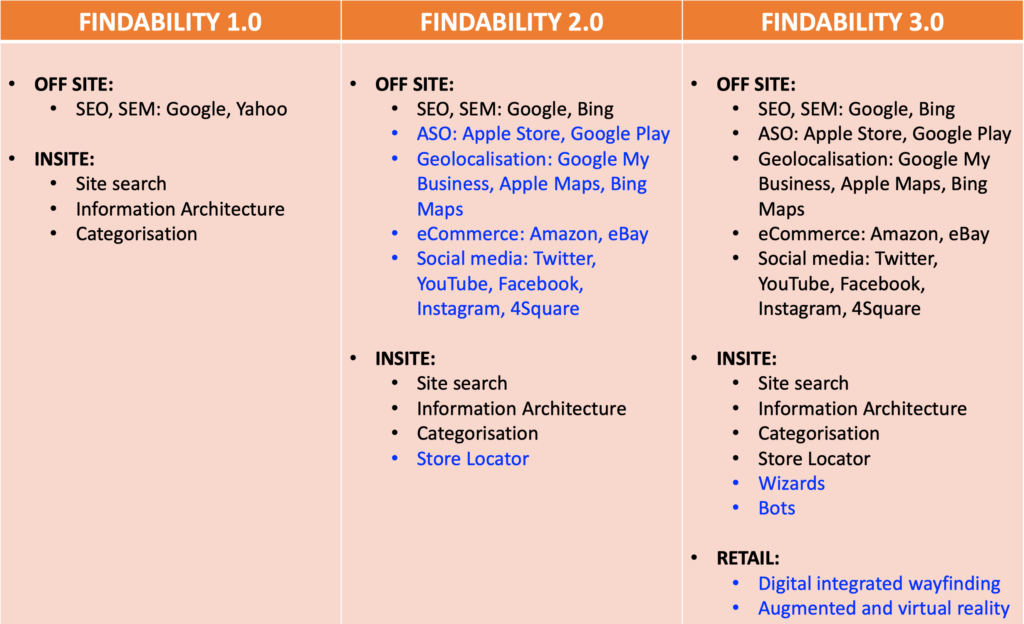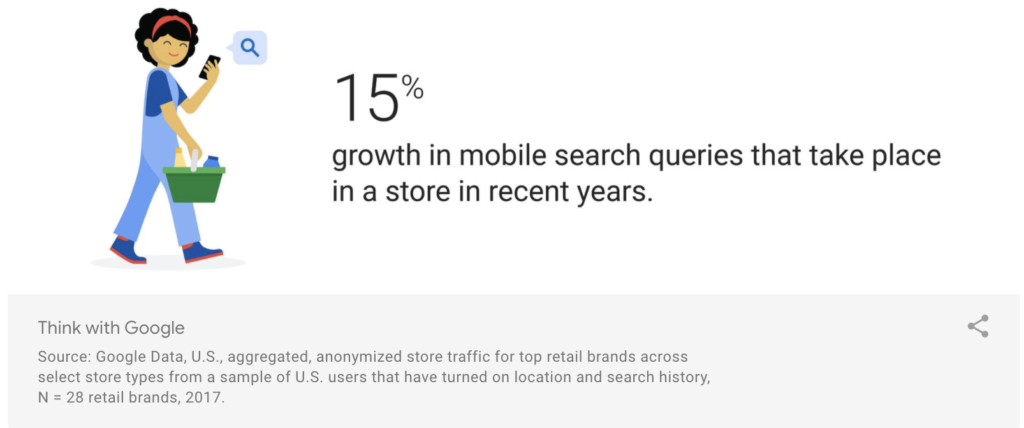Enjoy dynamic listening on the go—this podcast, AI-generated for your convenience, is perfect for driving, commuting, or waiting in line!
![]()
Here we are, after a long time from last post in here! These days of Covid-19 are the perfect time to put in order our ideas.
I was just wondering about the evolution during time of the concept of Findability.
All begins from the definition we get from Heather Lutze and then the popularization of the term by Peter Morville in the early 2000s as: “Findability is the ability of users to identify an appropriate Web site and navigate the pages of the site to discover and retrieve relevant information resources“.
In those twenty years tons of water passed under the bridge. We are now facing with a new and extended concept of Findability which covers several territories: SEO, social media, eCommerce and, of course, physical stores as well.
Basically, we shifted from the concept of Findability 1.0, coined by Lutze and Morville to the more comprehensive concept of Findability 3.0.

The Findability 3.0 era is about bridging digital and physical experiences to make products and services discoverable, regardless of where they are.
From digital perspective the consumer behavior is the same, but the platform has splintered.

When it comes to purchase a product or service people are transitioning across devices, environments and activities.

New technological platforms amplify experiences in the physical world, filling the gap between bits and atoms.

Because of this, the challenge for the digital experts is to take a holistic approach to this new scenario in order to anticipate the consumer journeys and the experience gaps to overcome them as simply and effective as possible.

To build the Findability strategies, we need to consider what people are searching for before and after they arrive at the store. Whether it’s helping them find the right product, tracking down coupon codes, or even stopping hunger pangs, predicting their intent will help get us ready to anticipate and deliver on those needs.

For example, IKEA Place is a smartphone app that virtually discovers and places any of 2,000 IKEA products in the home. An advancement over the company’s 2012 augmented reality app, the recent version allows users to move the object around the room. Scanning the home floor first ensures that the item appears proportional in size to other objects in the room, solving the problem of fit. At 98% accuracy, the fidelity of these features builds buyer confidence that physical reality will match what they imagine, whether ordering online or purchasing in the store.

BestBuy developed a new mobile app to locate product in stores and make it easy for consumer discovering its products.

When a consumer enters in one of BestBuy’s stores, the app switches to “Store Mode” and creates a personalised experience. This way, customer gets alerts about new products and their location in the store.
Imagine to use iBeacons, so not only does the app know where you are in the store, but it could also show you about products in the area that you’re in – for instance, if you were in the kitchen area, it could offer to compare some of the best-selling (or best-rated) tables or chairs. It would develop synergies between Findability and sales tactics.
That’s all so far, anyway I am going to dig deeper on the next posts 🙂
